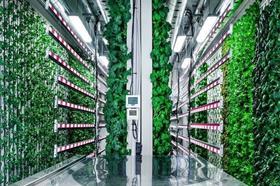
Hort Innovation has announced it has teamed up with a consortium led by agricultural consultancy RMCG in partnership with University of Technology Sydney (UTS) and global urban agriculture consultancy Agritecture, to assess the potential of emerging production technology and its application in the Australian urban landscape as part of a six-month project.
In a release, Hort Innovation said the use of technology, such as vertical farm systems and hydroponics, in food production and delivery systems have the potential to redefine horticulture by optimising yield, quality, and supply.
“High-technology horticulture is being implemented in urban areas across the globe using vertical farm systems, hydroponics and aquaponic systems and nearly fully automated production as well as rooftop, underground and floating farms,” it said in a statement.
Hort Innovation chief executive Matt Brand said bringing the technology to Australia would help attract capital as well as new investment to the sector with new ideas, approaches and mindsets.
“It gives us the opportunity to grow more from less and to keep demonstrating the good work that Australian growers do, day in day out, providing food to families both here and overseas,” explained Brand.
“Urban also means regional areas and hubs. Growers will use the technology as part of the overall production mix. It’s another production system that will be part of the diversity and variety that is Aussie horticulture.
“High technology horticulture may have the potential to play a significant role in increasing Australia’s horticulture sector value and help achieve Australia’s target of a A$30bn industry by 2030,” he added.
The feasibility study aims to identify opportunities and challenges for high technology horticulture in urban Australia. It will identify a range of high technology systems and assess their suitability to urban Australia by considering four key areas.
This includes how the technology fits within current regulations and planning requirements, farm input and waste, supply chain logistics and social, environmental and economic requirements.
Hort Innovation said the project will include a high-level literature review, modelling of the social, economic and environmental impacts and detailed analysis of how the economics of high technology urban systems compare to traditional farming systems.
The outcomes of the study will identify future priorities for research, development and extension activities and investment into Australian high technology horticulture in urban areas.
The study is being guided by an industry-led reference group including growers and emerging commercial leaders engaged in urban high technology horticulture in Brisbane and Sydney, members of local city councils, and subject-matter experts in protected cropping.



